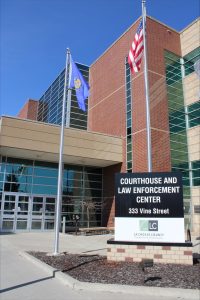Diversity and Exclusion?
Anti-Black Racism and the challenges of diversity work
October 20, 2015
Dr. Christopher Stuart Taylor, Diversity and Inclusion Coordinator at the Ontario Ministry of the Attorney General, paid a visit to campus this past Wednesday, Oct. 14. Taylor spoke on current diversity work policies and their fight against inequality for the black community not only in Ontario, but wherever he is able to deliver his message on anti-black racism.
Current theories of diversity and inclusion, along with current diversity work, is good, said Taylor, but in the presentation, he set out to dissect how African Americans tend to fall through the cracks of current policies in place. In Ontario, multiculturalism policies exist, but there, anti-black racism still results in a small black community placing last in too many categories.
Taylor dives into the history of blackness, the negativity that surrounds it and where the black community places in things like education and income when compared to other races.
“When you look at diversity work now, it’s a one size fits all program, and this does not address the nuances of anti-black racism,” said Taylor. “I’m focusing in on this because blacks rank at the bottom.”
Using contemporary anti-black racism issues in both Ontario and Wisconsin, along with comparative data, Taylor presented the need for stronger inclusion and diversity programs here in Wisconsin, as well. Taylor’s work is largely in diversity and inclusion training, in which he touches on issues like inclusive leadership, barrier free recruitment, cultural competency and understanding unconscious biases, to name a few.
Taylor pushed for a clearly defined diversity strategy in order to see change in the unique racial situation blacks find themselves in due to white supremacy.
A student in attendance at Taylor’s presentation noted, “For people to attack anti-black racism, they have to look right through white supremacy. It’s already here.”
A call to action was ultimately what Taylor left with the students and faculty in attendance on Wednesday. For people to talk about, and admit, that anti-black racism exists right here is Taylor’s first step. Institutions then need to realize current diversity strategies support anti-black racism, but they must also have a clearly defined strategy that addresses anti-black racism specifically.
Developing stronger accountability methods for these institutions must follow. Only then can policies be created that enforce personal accountability for anti-black racism.
“Tangible and visible consequences need to arise,” said Taylor. “We all need to be proactive.”
Richard Breaux, professor of ethnic and racial studies at UW-La Crosse, added, “Dr. Taylor was very clear about not conflating or confusing diversity with racial diversity, or class diversity, because once you become more specific in the language you use, you become more true to the thing that you’re really trying to address.”
“History is not the past, it’s the life we live everyday” said Taylor. “For Wisconsin, it is important understand what the root of the problem is in order to take action, act locally and then think globally.”
Taylor honed in on anti-black racism, which has not wavered, and he articulated this through his knowledge of diversity work and black history.





